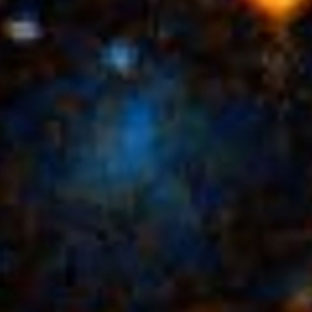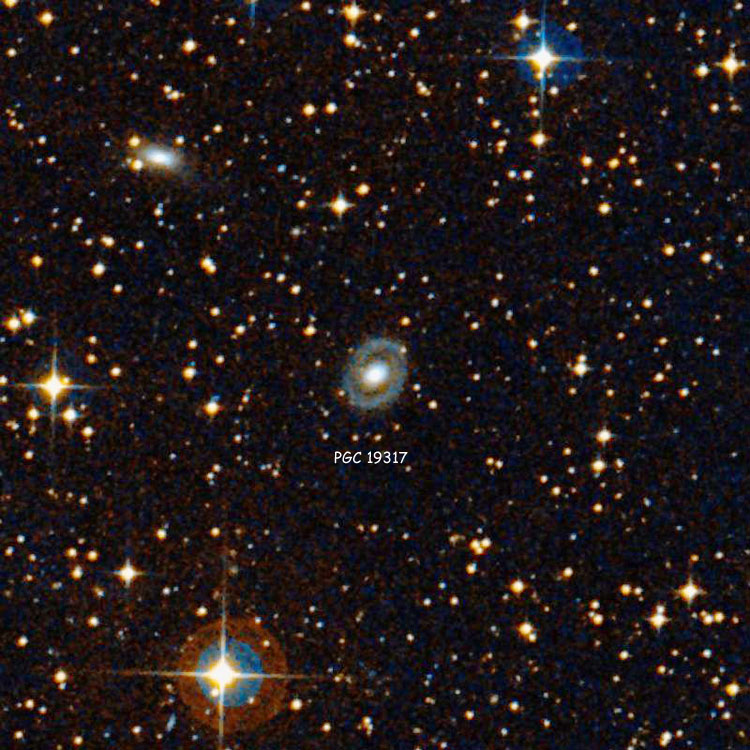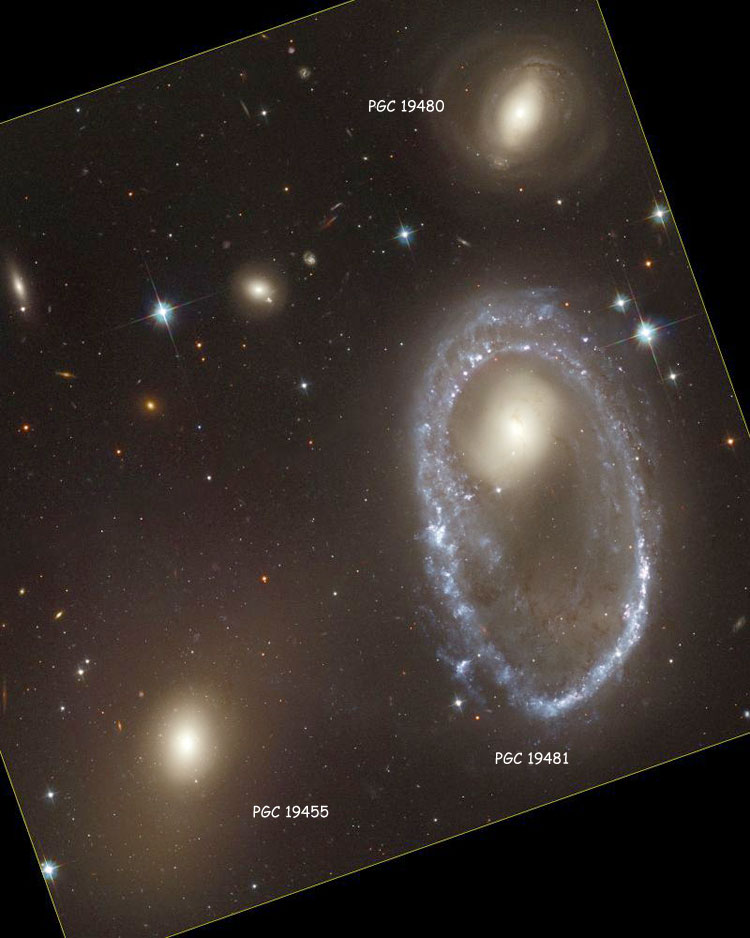PGC 19275 (= PGC 100718)
A 16th-(B)magnitude spiral galaxy (type Sc) in Canis Major (RA 06 34 47, Dec -30 58 41)
Based on recessional velocity of 1600 km/sec, about 70 million light years away (although given the relatively small velocity, peculiar (non-Hubble redshift) velocities could considerably alter this result). Given that and apparent size of 1.0 by 0.9 arcmin, about 20 thousand light years across. |

Above, a 1 arcmin wide closeup of PGC 19275
Below, a 12 arcmin wide region centered on the galaxy |

PGC 19317
A 14th-magnitude lenticular galaxy (type (R')SB0/a) in Columba (RA 06 36 45.3, Dec -35 04 15)
Based on a recessional velocity of 7650 km/sec, PGC 19317 is about 360 million light years away. Given that and its apparent size of 1.1 by 0.8 arcmin, it is about 115 thousand light years across. Used by the de Vaucouleurs Atlas of Galaxy Types (as ESO 365-35) as an example of type (R2')SAB(l)0/a. (Note: the image in the de Vaucouleurs Atlas does not have North at the top.) |

Above, a 2.4 arcmin wide closeup of PGC 19317
Below, a 12 arcmin wide region centered on the galaxy

PGC 19454 (= PGC 19480, which see)
PGC 19455
A 14th-magnitude lenticular galaxy (type S0) in Volans (RA 06 43 25.4, Dec -74 15 26)
Recessional velocity 6345 km/sec. Apparent size 1.5 by 1.0 arcmin. Near PGC 19481, which see (for now) for images. |
PGC 19458
A 14th-magnitude lenticular galaxy (type E/S0) in Volans (RA 06 44 17.5, Dec -74 16 36)
Recessional velocity 6430 km/sec. Apparent size 0.9 by 0.55 arcmin.
PGC 19480 (= PGC 19454)
A 14th-magnitude lenticular galaxy (type S0-) in Volans (RA 06 43 05.9, Dec -74 12 55)
Recessional velocity 7000 km/sec. Apparent size 0.8 by 0.75 arcmin. Near PGC 19481, which see (for now) for images. |
PGC 19481, the Lindsay-Shapley Ring
A 13th-magnitude ring galaxy (type Ring) in Volans (RA 06 43 06.0, Dec -74 14 11)
Based on a recessional velocity of 6505 km/sec, PGC 19481 in about 300 million light years away. Given that and its 1.6 by 0.95 arcmin apparent size, it is about 140 thousand light years across. The galaxy is undoubtedly the result of a slightly off-center collision between two galaxies, which created a gravitationally-induced shock wave that is spreading outward through the surrounding gases, compressing them, and thereby creating a gradually expanding ring of hot, bright young stars surrounding the remaining structure. Within another 300 million years or so the ring will spread into regions too far from the galaxy to continue the star formation, and the ring will fade from view. Which galaxy collided with PGC 19481 is uncertain, but is not likely to be one of those still fairly close to it, as their low relative speeds would have caused them to merge with the galaxy, rather than continue on their own way. |

Above, a 3 arcmin wide region centered near PGC 19481; also shown are PGC 19480 and PGC 19455
(Image credits for all images: NASA, ESA, and The Hubble Heritage Team (STScI/AURA))
Below, a 1.2 by 1.8 arcmin wide closeup of PGC 19481

Below, a 12 arcmin wide region centered on PGC 19481, also showing PGC 19455, 19458 and 19480

|